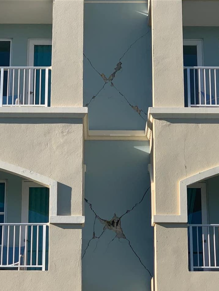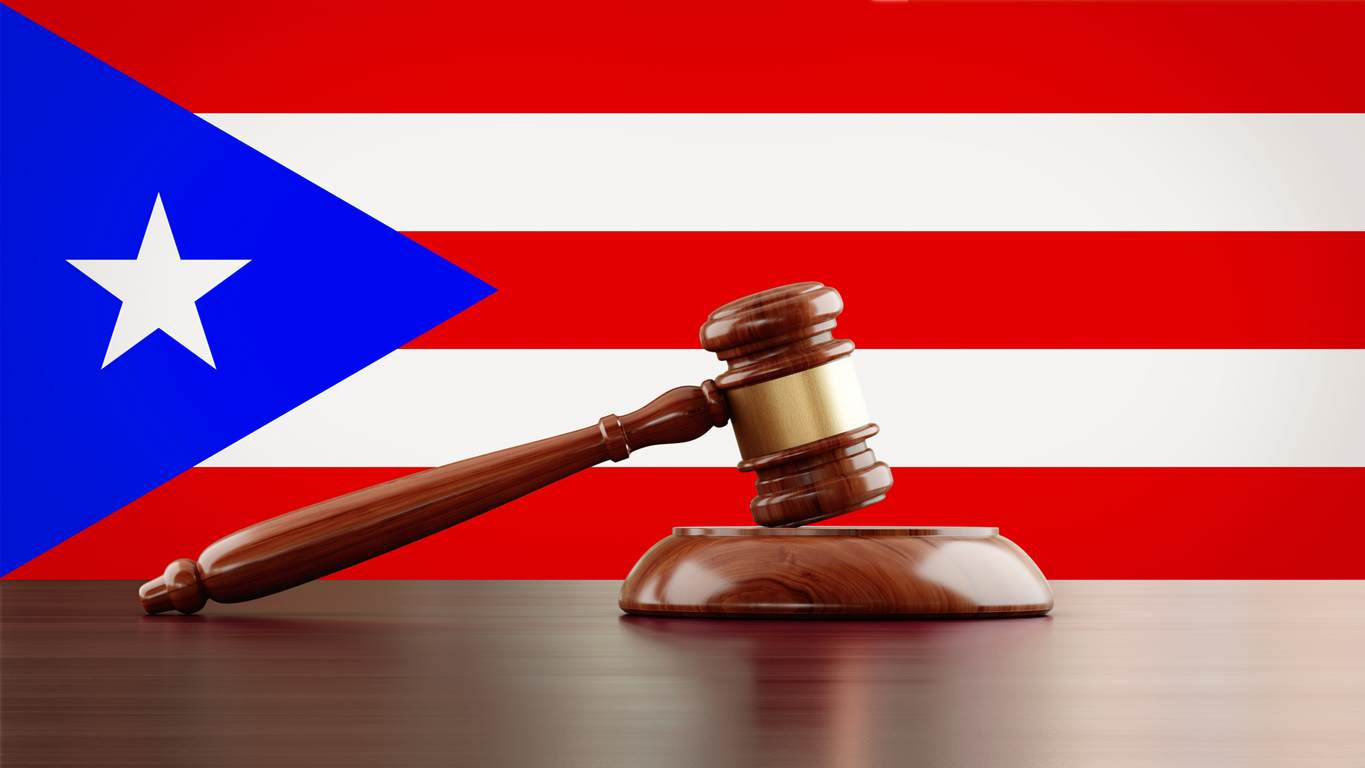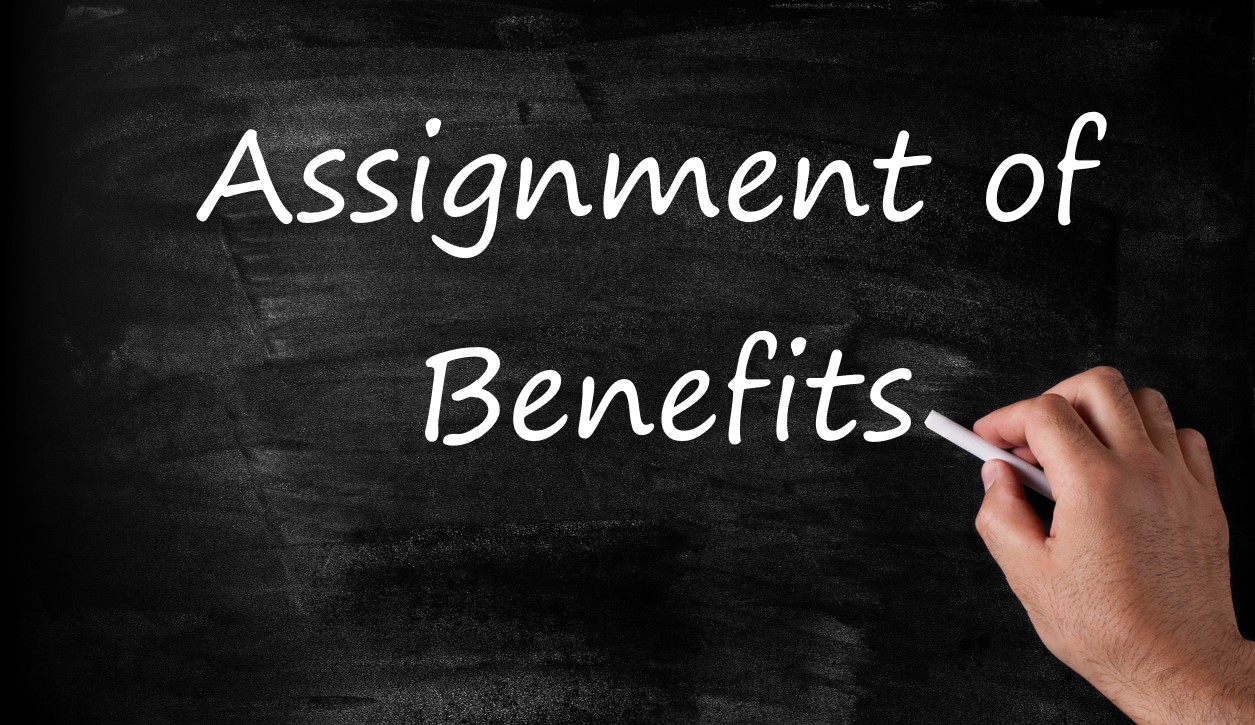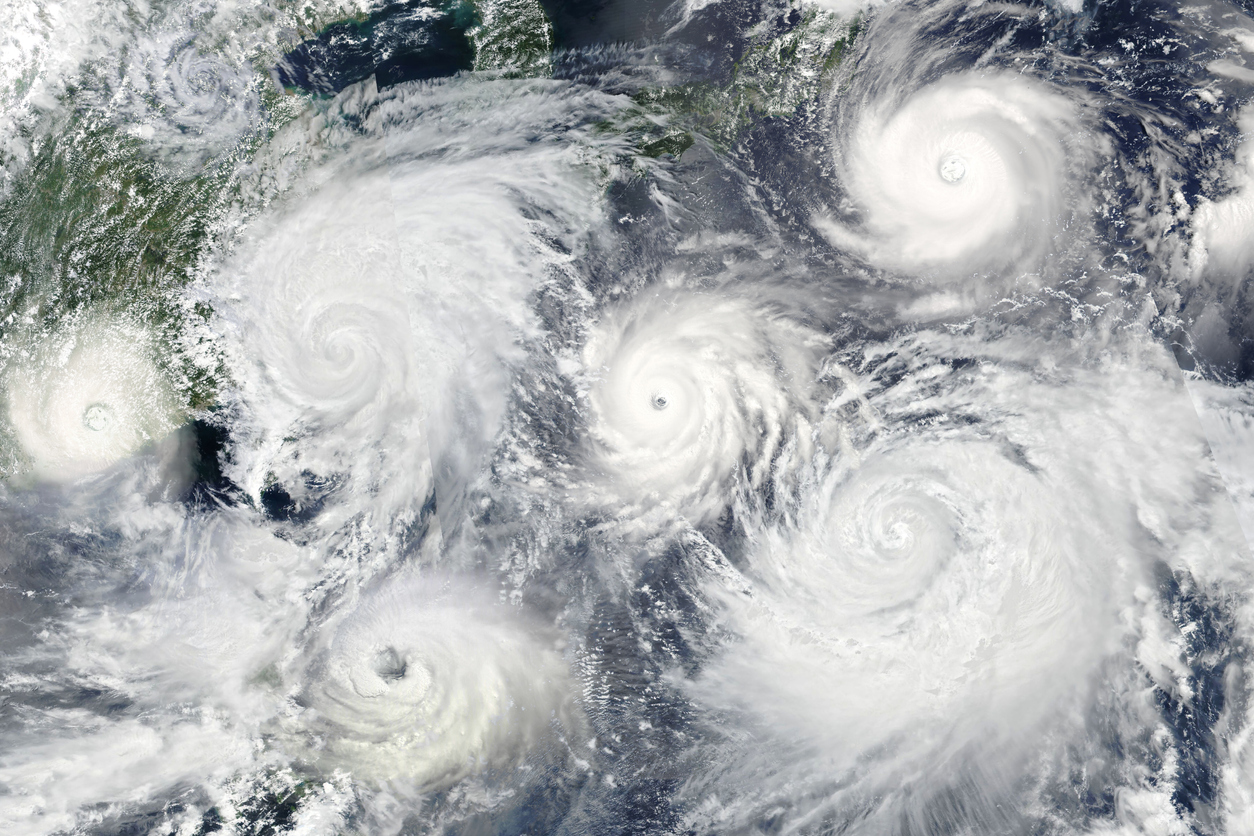Puerto Rico Hurricane Maria claims are not close to being finished. Now, we have major earthquakes impacting Puerto Rico. The worst example of poor treatment to policyholders following a hurricane catastrophe is found in Puerto Rico. It is sad and now numerous earthquakes are causing more damage and loss.
Diagonal or what adjusters typically call “X” cracks happen in earthquakes. The photo above taken from a recent loss in Puerto Rico is an example of earthquake diagonal “X” cracking. As noted in the FEMA materials attached to this blog, these cracks are typical:
In shearwalls, large diagonal tension cracks will form when the walls are heavily loaded by severe earthquake shaking (HAZ-DTEN)
Earthquakes will normally cause a diagonal crack in each direction (Cross Cracking) in the highly stressed areas of shearwalls (i.e., between window openings, over stacked door openings) since the shear force reverses causing diagonal tension cracking in each direction.
My concern is that the same FEMA article warns about how difficult it is to inspect and find all the structural damage caused by earthquakes:
The problem of identifying, let alone properly evaluating these hazards, is staggering.
A well-trained engineer may, at best, be able to rate the risk of various hazards on some arbitrary scale like bad, very bad, and deadly. We must consider that:
• Judgments cannot be precise.
• We must try to identify brittle vs ductile behavior.
• Partial collapse is very difficult to assess.
• The cause of the condition is very important input (i.e., earthquake with expected after-shock, windstorm, etc.).
As Corey Harris noted ten years ago in What Should I Do After A Loss? One Insurer’s Tips Shed Light On Post Loss Obligations, “If safe to do so, make temporary repairs as necessary to prevent further damage and protect your property.”
The first concern following a earthquake loss is to be safe. Be careful. The Seismic Safety Commission states the following about what to do after an earthquake:
• Check yourself for injuries. Often people tend to others without checking their own injuries. You will be better able to care for others if you are not injured or if you have received first aid for your injuries.
• Protect yourself from further danger by putting on long pants, a long-sleeved shirt, sturdy shoes, and work gloves. This will protect your from further injury by broken objects.
• After you have taken care of yourself, help injured or trapped persons. If you have it in your area, call 9-1-1, then give first aid when appropriate. Don’t try to move seriously injured people unless they are in immediate danger of further injury.
• Look for and extinguish small fires. Eliminate fire hazards. Putting out small fires quickly, using available resources, will prevent them from spreading. Fire is the most common hazard following earthquakes. Fires followed the San Francisco earthquake of 1906 for three days, creating more damage than the earthquake.
• Leave the gas on at the main valve, unless you smell gas or think it’s leaking. It may be weeks or months before professionals can turn gas back on using the correct procedures. Explosions have caused injury and death when homeowners have improperly turned their gas back on by themselves.
• Clean up spilled medicines, bleaches, gasoline, or other flammable liquids immediately. Avoid the hazard of a chemical emergency.
• Open closet and cabinet doors cautiously. Contents may have shifted during the shaking of an earthquake and could fall, creating further damage or injury.
• Inspect your home for damage. Get everyone out if your home is unsafe.
• Aftershocks following earthquakes can cause further damage to unstable buildings. If your home has experienced damage, get out before aftershocks happen.
• Help neighbors who may require special assistance. Elderly people and people with disabilities may require additional assistance. People who care for them or who have large families may need additional assistance in emergency situations.
• Listen to a portable, battery-operated radio (or television) for updated emergency information and instructions. If the electricity is out, this may be your main source of information. Local radio and local officials provide the most appropriate advice for your particular situation.
• Expect aftershocks. Each time you feel one, drop, cover, and hold on! Aftershocks frequently occur minutes, days, weeks, and even months following an earthquake.
• Watch out for fallen power lines or broken gas lines, and stay out of damaged areas. Hazards caused by earthquakes are often difficult to see, and you could be easily injured.
• Stay out of damaged buildings. If you are away from home, return only when authorities say it is safe. Damaged buildings may be destroyed by aftershocks following the main quake.
• Use battery-powered lanterns or flashlights to inspect your home. Kerosene lanterns, torches, candles, and matches may tip over or ignite flammables inside.
• Inspect the entire length of chimneys carefully for damage. Unnoticed damage could lead to fire or injury from falling debris during an aftershock. Cracks in chimneys can be the cause of a fire years later.
• Take pictures of the damage, both to the house and its contents, for insurance claims.
• Avoid smoking inside buildings. Smoking in confined areas can cause fires.
• When entering buildings, use extreme caution. Building damage may have occurred where you least expect it. Carefully watch every step you take.
o Examine walls, floor, doors, staircases, and windows to make sure that the building is not in danger of collapsing.
o Check for gas leaks. If you smell gas or hear a blowing or hissing noise, open a window and quickly leave the building. Turn off the gas, using the outside main valve if you can, and call the gas company from a neighbor’s home. If you turn off the gas for any reason, it must be turned back on by a professional.
o Look for electrical system damage. If you see sparks or broken or frayed wires, or if you smell burning insulation, turn off the electricity at the main fuse box or circuit breaker. If you have to step in water to get to the fuse box or circuit breaker, call an electrician first for advice.
o Check for sewage and water line damage. If you suspect sewage lines are damaged, avoid using the toilets and call a plumber. If water pipes are damaged, contact the water company and avoid using water from the tap. You can obtain safe water from undamaged water heaters or by melting ice cubes.
o Watch for loose plaster, drywall, and ceilings that could fall.
• Use the telephone only to report life-threatening emergencies. Telephone lines are frequently overwhelmed in disaster situations. They need to be clear for emergency calls to get through.
• Watch animals closely. Leash dogs and place them in a fenced yard. The behavior of pets may change dramatically after an earthquake. Normally quiet and friendly cats and dogs may become aggressive or defensive.1
We will be following up about the Puerto Rico earthquake losses and the rights of earthquake victims and policyholders in Puerto Rico. It is really a sad situation given everything Puerto Rico has had to go through and is still suffering following Hurricane Maria. Just when you think it could not get worse.
Thought For The Day
I’m a doer, and whether it was the tsunami in Sri Lanka or the earthquake in Indonesia, I was always saying, ‘I should be there; I should be helping out.
—Paul Walker
________________________
1 https://ssc.ca.gov/disasters/after_earthquake.html





